背景
公司从 2019 年立项以来,陆续分别开了若干个工程,这里代称为 apple, peach, banana, 以及 infra 工程,每个工程对应公司的一块业务,大体都是不相似的,其中 infra 的工程用于工程间代码共享,其中也有工程依赖于另外的工程,现需要将以上工程中部分功能挪到另一个新开的工程 dashboard。如何将多个仓库融合在一个仓库中,并保留原有历史记录,并且随着业务的演进,能够实时同步代码,且工程大多开发了5年以上,代码量巨大,如何组织代码,本文就是为这一方案而生。
原有工程结构如下:
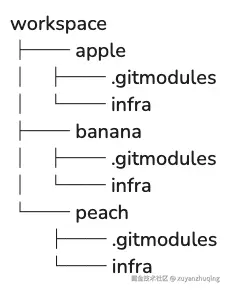
每个工程都是一个独立的 git 仓库,每个仓库中都有一个 infra submodule 子工程
.gitsubmodules 文件内容 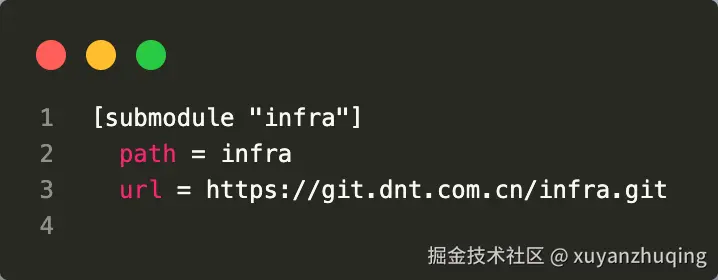
git 仓库调整
通过引用 naraku 这个 shell 工程, 将所有仓库包揽在 naraku 仓库之下,改造完成后工程结构如下:
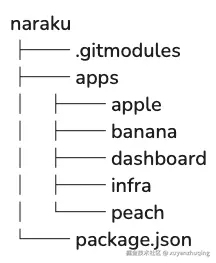
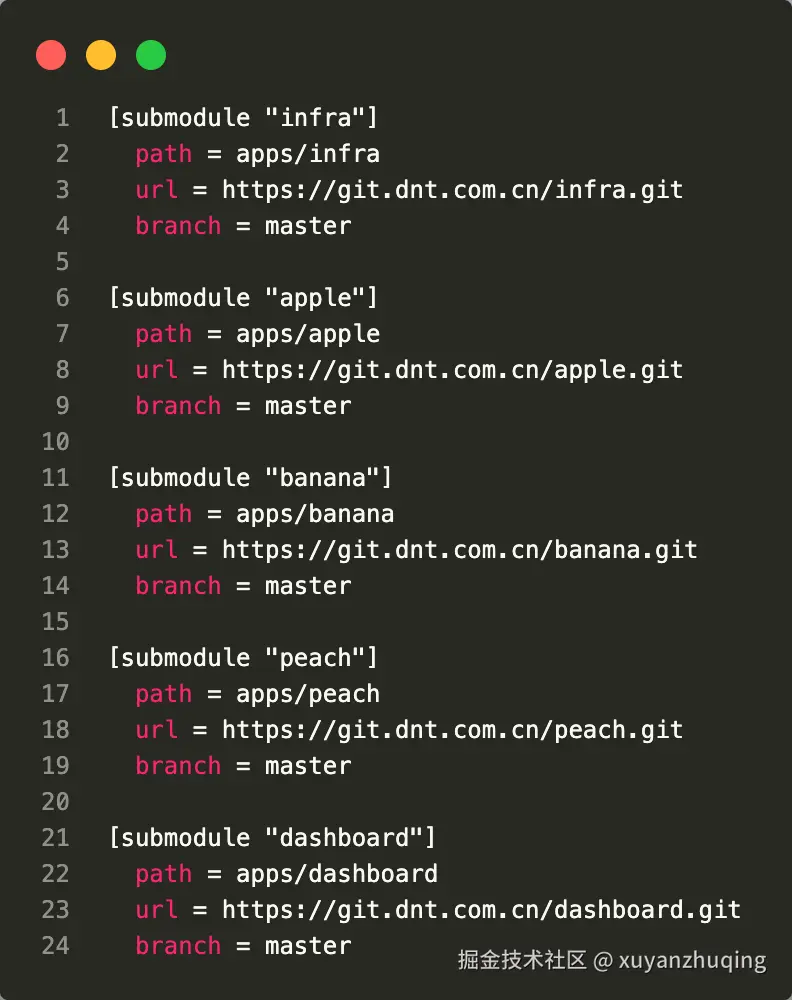
单体工程改造
webpack 调整
这里以 vue-cli 为例,chainWebpack 中加入以下代码
js
{
chainWebpack: config => {
// 配置路径别名
config.resolve.alias
.set('@', resolve('src'))
.set('&', resolve('../infra/src'))
}
}tsconfig.json 调整
json
{
"extends": "../../tsconfig.common.json",
"compilerOptions": {
"baseUrl": ".",
"paths": {
"&/*": [
"../infra/src/*"
],
"@/*": [
"src/*"
]
}
},
"include": [
"src/**/*.ts",
"src/**/*.tsx",
"src/**/*.vue",
"tests/**/*.ts",
"tests/**/*.tsx",
"../frontend-infra/src/**/*.ts",
"../frontend-infra/src/**/*.tsx",
"../frontend-infra/src/**/*.vue",
"../frontend-infra/src/**/*.ts",
"../frontend-infra/src/**/*.tsx"
]
}多仓库管理 workspaces 改造
naraku 最外层 package.json 指定 workspaces
json
{
"name": "naraku",
"version": "1.0.0",
"description": "",
"private": true, // 一定要指定为私有仓库
"workspaces": [ // 指定子仓库的 glob 路径
"apps/*"
],
"main": "index.js",
"scripts": {
"alias": "cross-env APP_NAME=${APP_NAME} node script.js run",
"bundle": "yarn alias bundle",
"publishBundle": "yarn alias publishBundle"
},
"keywords": [],
"author": "",
"license": "ISC",
"devDependencies": {
"@types/node": "^24.3.0",
"@types/webpack-env": "^1.18.8"
},
"dependencies": {
"commander": "^9.5.0",
"cross-env": "7.0.3",
"shelljs": "^0.8.5"
}
}启动工程
bash
yarn workspace apple run start | buildcicd 改造
通过以上改造之后,单体工程无法单独启动,需要改造通过 naraku 这个 shell 工程启动,构建,我这里是通过在jenkins pipeline 中指定环境变量,来启动不同的工程。
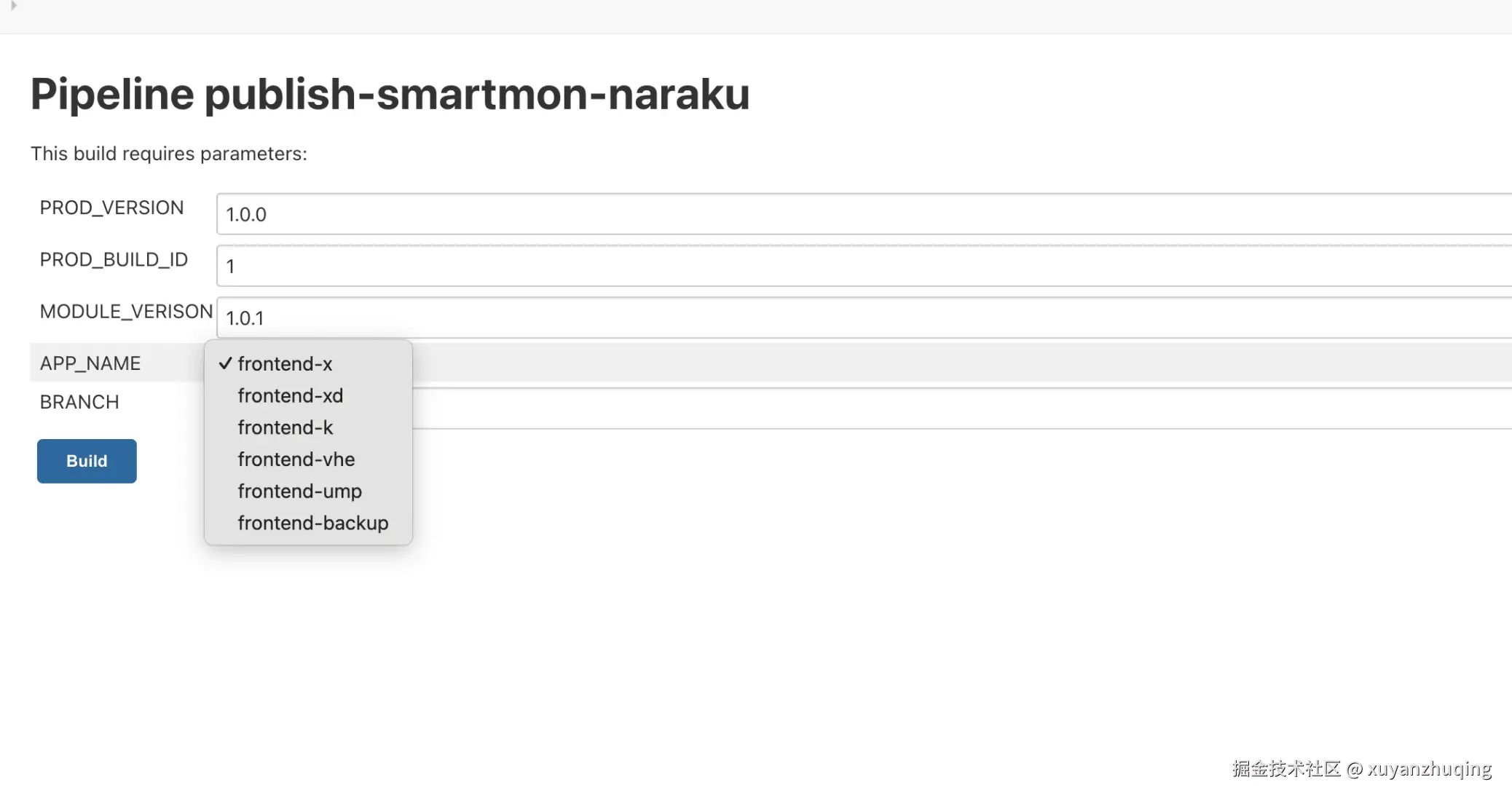
为使用构建需要 ,改造了npm script,所有命令通过 yarn alias 转发, 在根目录新建 script.js
js
const { Command } = require('commander');
const shelljs = require('shelljs');
const program = new Command();
const path = require('path');
program
.name('workspace-alias')
.description('CLI to turn APP_NAME to package.json name utilities')
.version('1.0.0');
const workspaceMap = generatedAliasMap()
program.command('run')
.description('Working with APP_NAME to workspace alias')
.helpOption('-e, --HELP', 'read more information')
.argument('<string...>', 'e.g. "build" or "start"')
.option('-w, --workspace <type>', 'workspace: ' + Object.keys(workspaceMap).join(' | '), process.env.APP_NAME)
.option('-v, --verbose [type]', 'verbose mode, just ouput the shell going to run', false)
.action((actions, opts) => {
// 映射目录 与 workspace
const workspace = workspaceMap[opts.workspace]
if (!workspace) {
console.error(`Workspace alias for "${opts.workspace}" not found!`)
process.exit(1)
}
const script =`yarn workspace ${workspace} ${actions.join(' ')}`
if (opts.verbose) {
greenLog(script)
return
}
greenLog(script);
shelljs.exec(script);
});
program.parse();
function generatedAliasMap () {
const apps = shelljs.ls('-d', 'apps/*/')
const aliasMap = apps.reduce((acc, appPath) => {
const pkg = require(`./${appPath}/package.json`)
acc[path.basename(appPath)] = pkg.name
return acc
}, {})
return aliasMap
}
function greenLog (msg) {
console.log('\x1B[32m%s\x1B[0m', msg)
}启动工程
bash
# yarn alias [action] -w [app_path]
yarn alias start -w infra优缺点
优点
- 通过以上改造实现了保留单体 git 记录。
- 随着业务的演进,能够实时同步代码。
- 工程改造量较小。
- 易于branch 分支管理。
缺点
- 单体仓库无法启动。
- 单体仓库的改动可能导致 dashboard 无法正常 work。
总结
都看到这里了,如果你有更多好的建议,欢迎在评论区留言。